Eastern tent caterpillar outbreaks patchy and localized
Silky tents, defoliation of infested trees and wandering caterpillars could mean you’re in a hotspot for eastern tent caterpillars.
You may or may not be seeing large (6 to 18 inches long), silky tents in the branches of wild cherry, cultivated Prunus spp., or crabapples, depending on where you live. Populations tend to build rapidly for a few years then collapse due to an abundance of predators, parasites and diseases. If you are in a hot-spot for eastern tent caterpillars, you may see lots of tents, some defoliation of infested trees and wandering caterpillars. In the southern half of the Lower Peninsula, caterpillars are expected to complete development and stop feeding by the end of May.
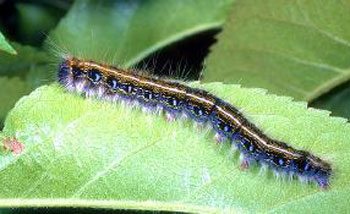
Full-grown eastern tent caterpillar.
Photo credit: University of Kentucky
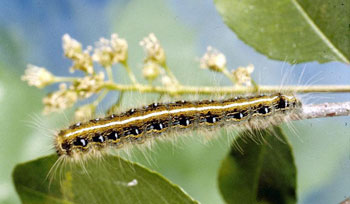
Eastern tent caterpillar. Photo credit: Wangshaopeng
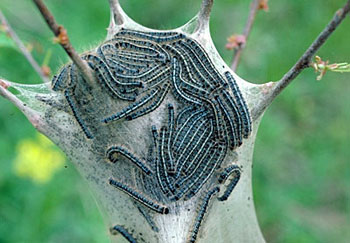
Tent made by eastern tent caterpillars.
Photo
credit: Paula Shrewsberry, UMD
By the way, be careful when attempting to identify insects using a Google picture search. The fourth image posted by Google when I searched for eastern tent caterpillar was a gyspy moth caterpillar. Further investigation revealed that it is an image from an article discussing caterpillars which may be confused with gypsy moths. Be sure to read articles that the images come from.
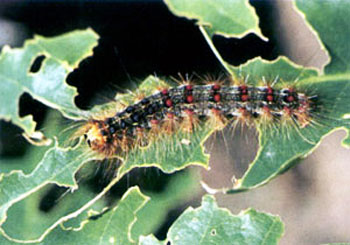
This gypsy moth caterpillar was the fourth image
posted after a Google search for eastern tent caterpillar.
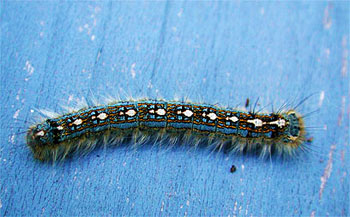
This forest tent caterpillar was among the first
10
images posted on Google after a search for pictures
of eastern tent
caterpillar.
Dr. Smitley’s work is funded in part by MSU’s AgBioResearch.



 Print
Print Email
Email




